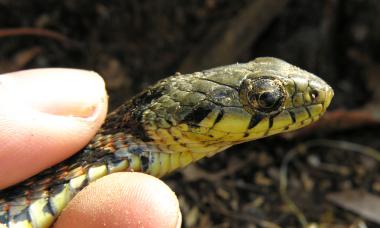
When new species of earthworms and frogs have been discovered from the Western Ghats this year, can their predators be far behind?
Scientists have described a new species of non-venomous endemic snake, Aquatic Rhabdops, from the northern Western Ghats.
The three-foot-long nocturnal snake hunts for prey underwater.
Interestingly, while adults of the Aquatic Rhabdops have off-white bellies and black spots on their olive brown skin, juveniles are olive green, with yellow undersides.
This colour difference in life stages could possibly be due to the different local habitats.
The new species is named after its aquatic nature since the adults are mostly associated with freshwater forest streams and juveniles are seen in water-logged areas, mostly on rocky plateaus.
Scientists say the new species, Rhabdops aquaticus, was till now considered a variant of the Olive Forest Snake, first described in 1863.
However, the new study confirms that the Aquatic Rhabdops is a different one: they sport not only different colours and patterns, but also vary in other features of size, shape and structure, and also genetic make-up.
Rhabdops species: Know More
Endemicity, the phenomenon of being present only in a specific geographical area, runs in the family: all Rhabdops snakes are endemic to India.
The Olive Forest Snake Rhabdops olivaceus is found only in the Western Ghats while the bi-coloured Forest Snake Rhabdops bicolour lives in a few localities in the northeast.
The Aquatic Rhabdops too is found only in the laterite plateaus of the northern Western Ghats in Goa, southern Maharashtra and northern Karnataka, in areas facing severe human pressures.